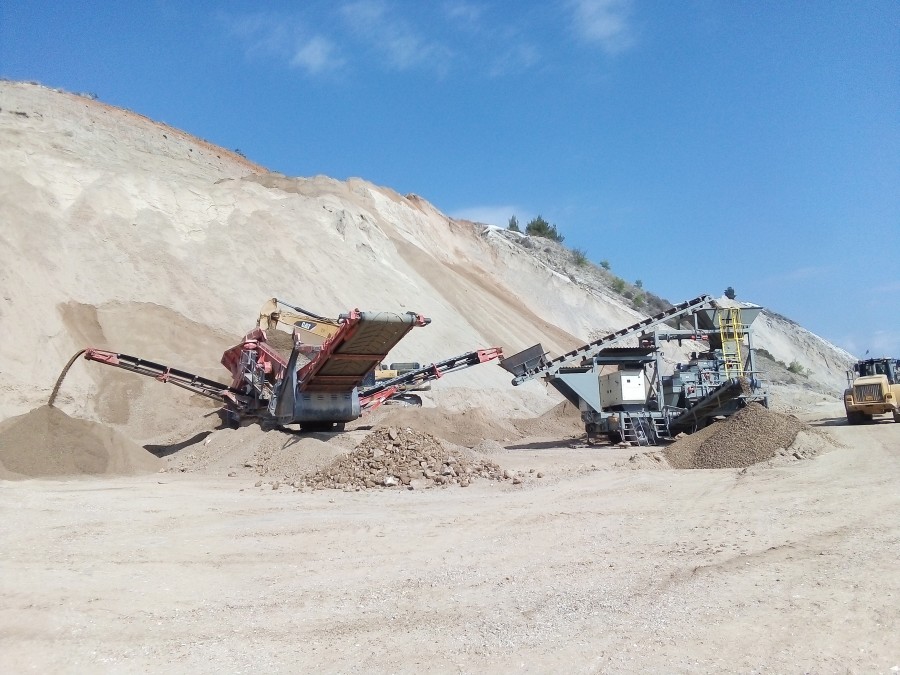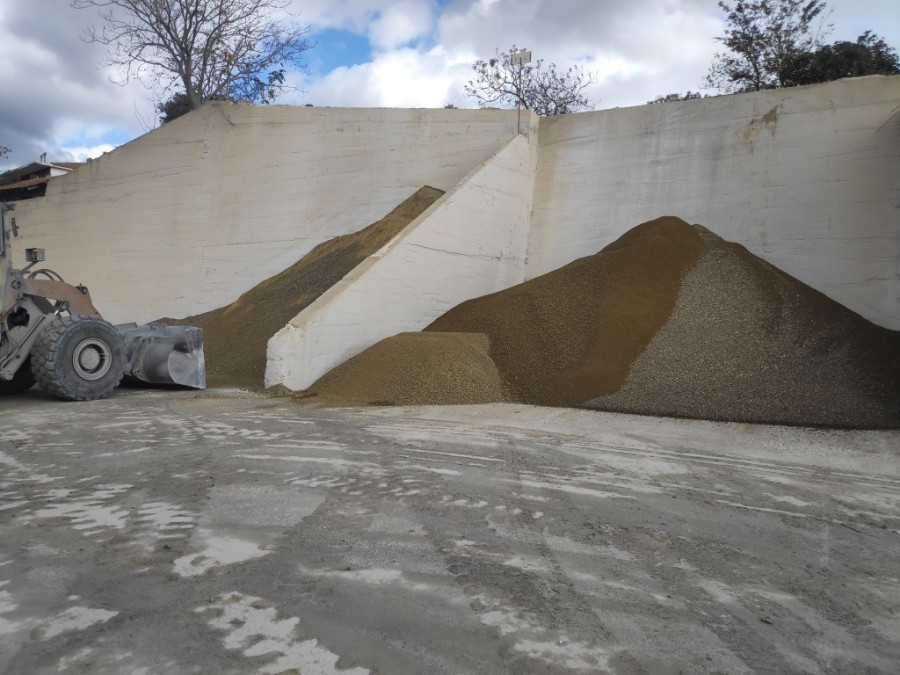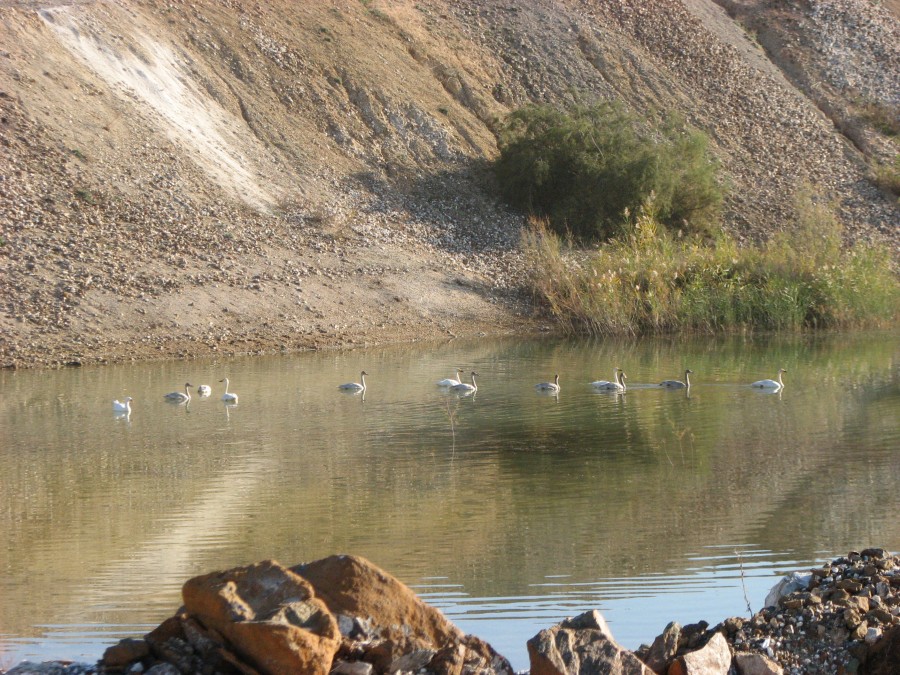
Preserving Natural Resources
At Grecian Magnesite, we understand the value of natural resources both above and below ground. We strive to deliver operational excellence, safety and environmental performance for our people, the society and our customers.
Our natural resources preservation strategy comprises three key pillars:
- Sustaining "virgin" mineral resources for the next generations.
- Converting mining & processing wastes into saleable products (Waste2product approach).
- Sustainable water use.
Sustainable Mining & Processing
Since the beginning, back in 1959, Grecian Magnesite has been following the principle that a deposit is an exhaustible natural resource and therefore the reserves of the mineral deposit should be maximized. Selective mining to maximize short term yield was never an option. On the contrary, the main mine design parameter was always the long-term optimum use of available resources.
In the 60’s when hand-picking was the only viable processing technique for magnesite worldwide, Grecian Magnesite had the providence to stockpile fine Run-of-Mine material extracted daily form the mine, which was not possible to be processed efficiently. This material was stored separately, in order to be used when new processing technologies would be available. According to the founder of the company, Mr. George Portolos, “a mine was exploited and another one was gradually created for the next generations”.
The development of the laser ore sorters in the 70’s allowed the first phase of exploitation of the fine stockpiles. Stockpiling of fine(er) material, not possible to treat with the laser sorters, continued. This approach has become a part of our DNA.
Today, more than 50 million metric tons of old stockpiles (with fine RoM material) are available for exploitation. With the development of new processing technologies, our own patented vibrating screens and magnetic separators and through the use of mobile processing units, utilization of the stockpiles is an essential part of GM’s production at Yerakini.
Optimum use of resources means that separation efficiency should always be high and therefore process losses kept to the minimum possible. Through continuous investments, Grecian Magnesite is seeking to minimize losses of valuable mineral to the waste streams. In recent years 3 new digital optical sorters replaced older ones, in order to maintain a sharp separation efficiency.
Monitoring of the waste streams at all processing stages, from mining down to calcination and final processing, is a day to day routine. Recycling of material streams and new product development from co-produced materials consumes a substantial part of our R&D effort. Dust collected from the kiln dedusting equipment is recycled and processed in a dedicated pelletizing unit to provide new feed for the kilns. By-products from different processing streams are evaluated and analyzed. According to their chemical and physical properties new applications are developed together with the sales & marketing departments.
A major project underway is the exploitation of the dunite material present at Yerakini mines. Dunite is the host rock for magnesite and for decades it was regarded as a waste material. Grecian Magnesite worked on characterization and mapping of the relevant deposits and started exploiting both in-situ material and dunite streams from every-day processing. An array of applications ranging from refractories, metallurgical and construction industries is being addressed. With this project in full development Grecian Magnesite will achieve the goal of valorizing >75% of each ton extracted from Yerakini Mines.
Sustainable water use
The main uses of water in the Yerakini Mines comprise the following:
- Ore washing
- Dust suppression
- Road wetting
- Flue gas cooling
- Kiln dust pelletizing
- Water-jet cutting
- Vehicle washing
- Drip irrigation for trees
- Human consumption
The water used by GM comes from the following sources:
- Atmospheric precipitation and surface runoff collected in an old excavation void properly formed as an artificial reservoir (lagoon) of substantial storage capacity. The lagoon surface area ranges between 156.000-186.000 m2 depending on the amount of water stored.
- Treatment and reuse of wastewater originating from ore washing activities taking place in the various magnesite beneficiation stages employed. Gravity separation with polymer addition is the applied method of treatment. The separation takes place in dedicated conventional settling tanks and results in two distinct streams, namely clarified effluent (overflow) and thickened sludge (underflow). The clarified effluent is pumped back to the beneficiation facilities to be reused as washwater whereas the thickened sludge is discharged to properly engineered tailings ponds. The recovery and reuse of treated wastewater is considered of utmost importance for GM, since the company’s yearly demand for process water is extremely high and cannot be satisfied with the extraction of lagoon freshwater alone.
- Groundwater extracted from a series of registered boreholes. Drip irrigation systems are exclusively supplied with well water and the same applies for water intended for human consumption.
Monitoring & Recording Program
The following actions are taken within the water management plan adopted by GM:
- Measurement & recording of wetted surface area, mean liquid depth and liquid volume of freshwater reservoir on monthly basis.
- Quality monitoring & recording of treated wastewater, reservoir water and borehole water. To this end, representative samples from all water sources are taken twice a year and sent for complete physicochemical and microbiological analysis at certified laboratories.
- Annual recording of the overall process water consumption along with the different water sources exploited and the individual water needs met.
From the relevant data collected within the period 2010-2022, it follows that 85-91% of the overall process water demand in the Yerakini Mines was satisfied by means of industrial wastewater treatment & reuse. The contribution of freshwater extracted from the artificial lagoon ranged between 8-13%. Finally, borehole water accounts for merely 1-2% of the total water consumption.
The basic targets of the water management plan adopted by GM:
- Maintaining high water level in the artificial reservoir at all times so that freshwater is always available for auxiliary use as washwater in the various magnesite beneficiation stages.
- Maintaining good quality of both reservoir water and groundwater.
- Minimizing washwater consumption and wastewater production during magnesite beneficiation.
- Minimizing water leakage due to damaged equipment and antiquated distribution networks.
- Improving measurement & recording of individual uses of water within the mine
| Water Management│Basic Indicators (Year) | 2020 | 2021 | 2022 | 2023 |
| Total water used (m3) | 5.681.785 | 5.919.038 | 6.600.983 | 5.843.353 |
| Total recycled water used (m3) | 5.188.900 | 5.346.900 | 6.043.380 | 5.270.520 |
| Total water (net) used (m3) | 492.885 | 572.138 | 557.603 | 572.833 |





